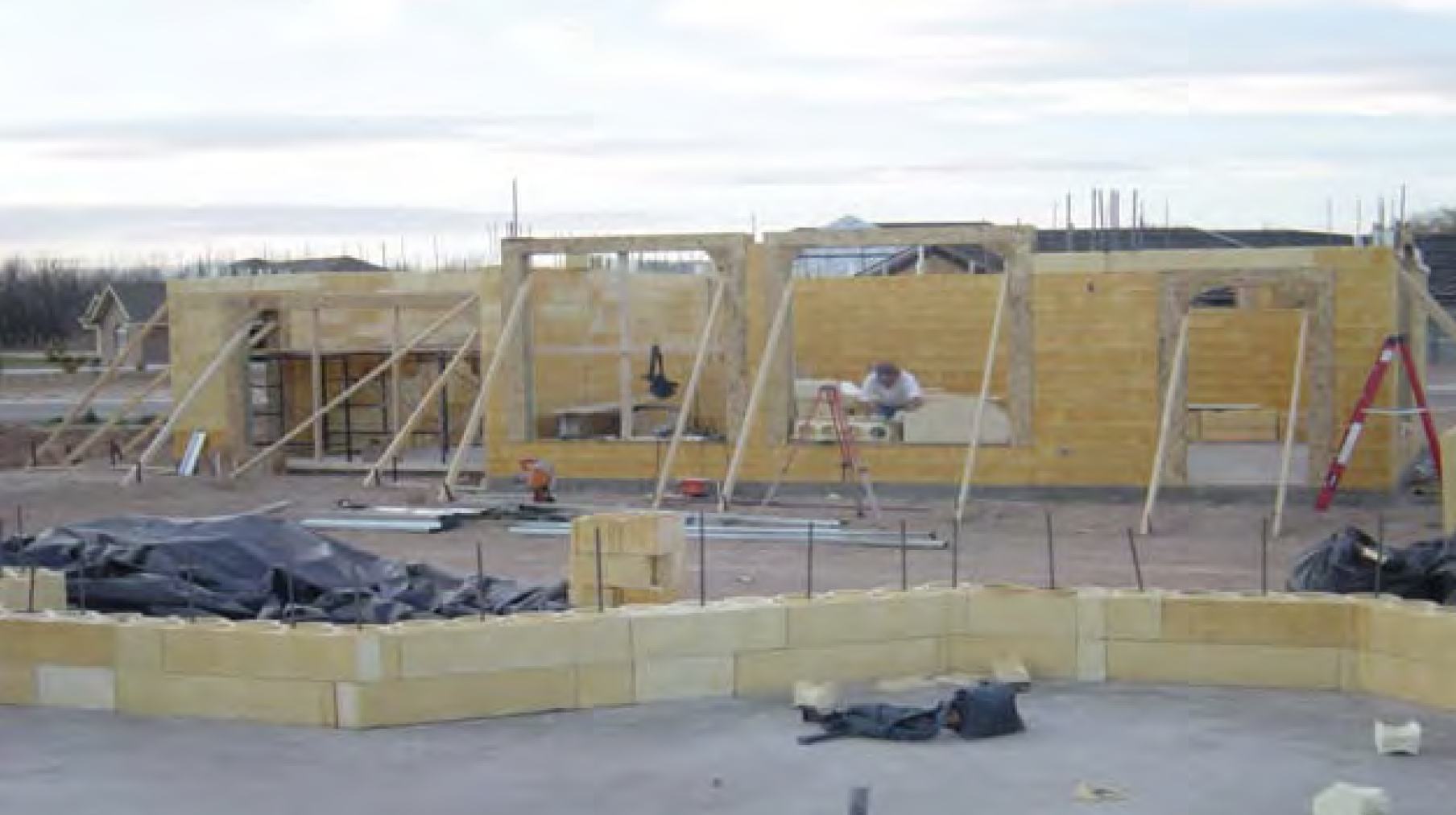THERMOBLOCK®
Super-Insulating Next Generation ICF™
An extremely high strength ICF building framework for commercial, industrial and residential wall systems. ThermoBlock construction translates to improved comfort, greater indoor air quality, and significant noise reduction in a super-insulated thermally efficient building envelope.

ThermoBlock™ is an insulated concrete form (ICF) that utilizes post and beam type construction. The eight (8”) inch wide by eight (8”) inch high by thirty-two inch (32”) long ICF is constructed of super-insulating, high strength, lightweight polyurethane foam, not expanded polystyrene (EPS) that most ICF’s use. Polyurethane Foam is the same material NASA uses to insulate the external fuel tanks of the Space Shuttle!
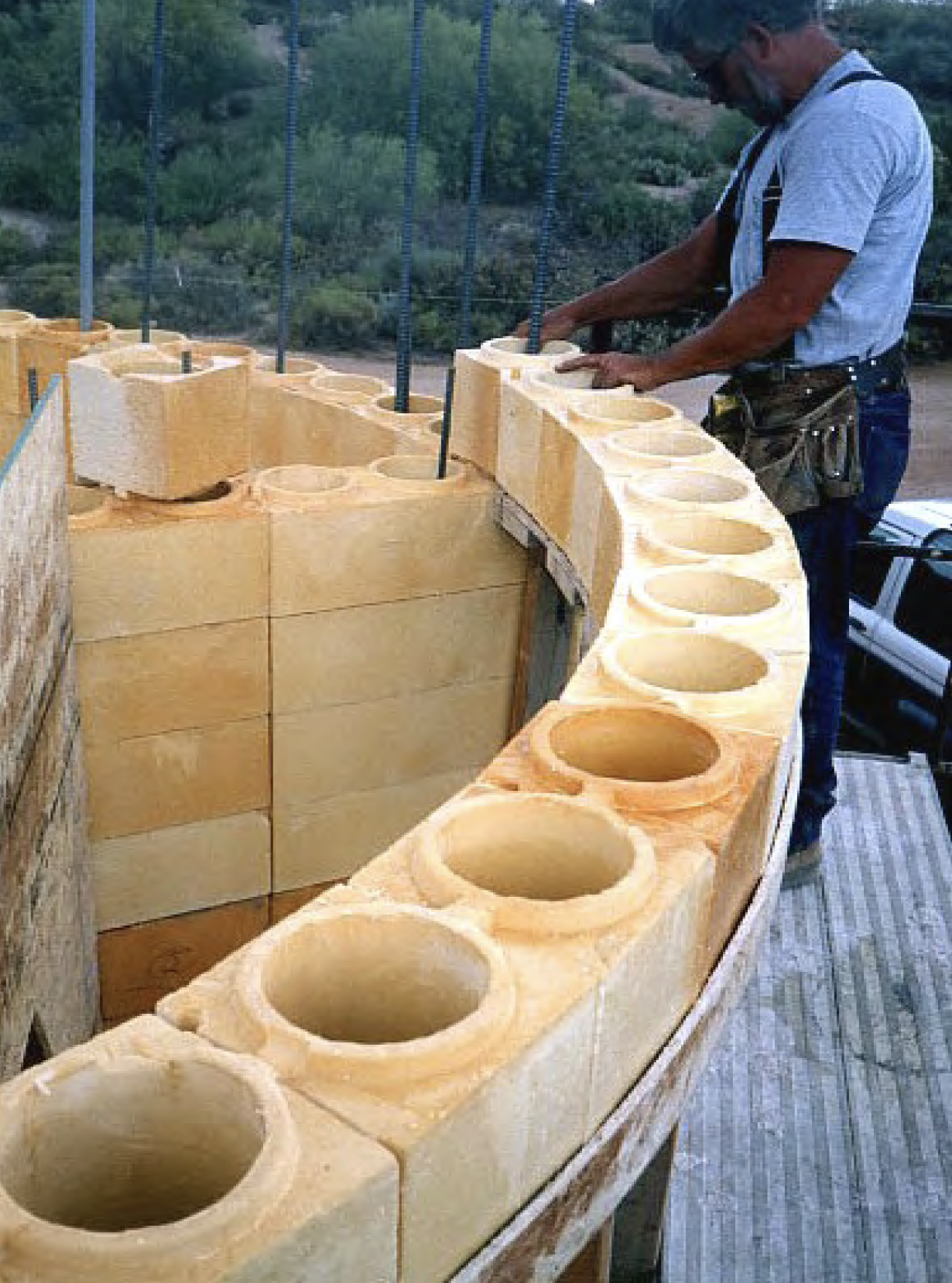
Curved Wall Applications
Curved wall applications should utilize a stacked bond system, that is, each block or block segments stacked directly on top the one below. Curved walls are created by cutting segments of each block and adhering it to the adjacent block with low expansion canned foam, as shown. A plywood jig should be constructed to accurately cut each segment so that the wall stays easily plumb. Bond beams are typically cut on site on curved walls. Bond beam cutting tools and miter boxes are available for rent or sale from ThermoBlock.
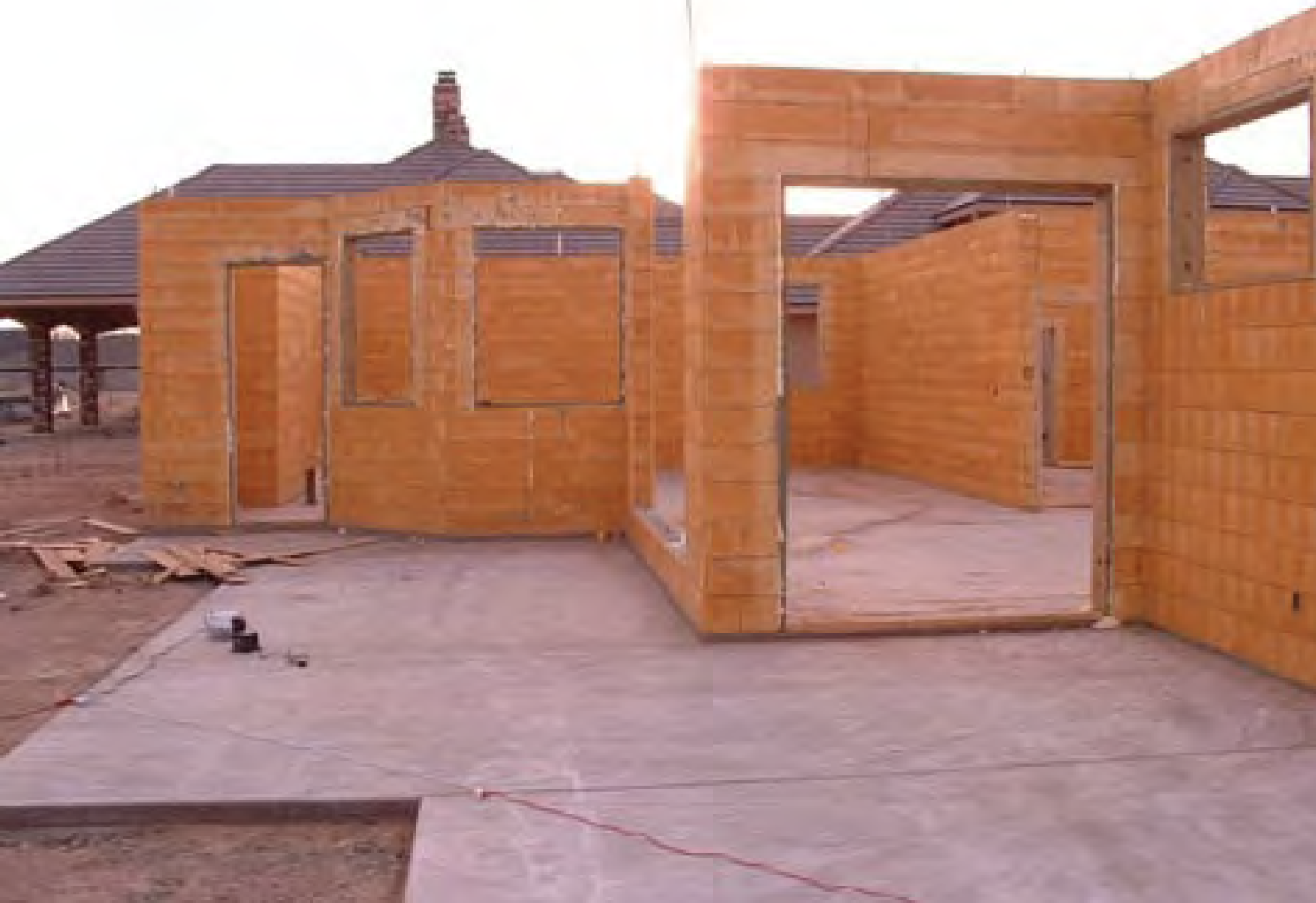
Headers
Headers over doors and windows can typically be installed in two ways:
- Wood or steel beams can be installed to support the block wall above the opening, as shown in figure 6.1. These supports should be sized by a professional engineer.
- Install bond beam blocks over the opening as per engineer’s report and allow the steel reinforced concrete bond beam(s) to carry the load of the wall above, as shown in figure 6.2.
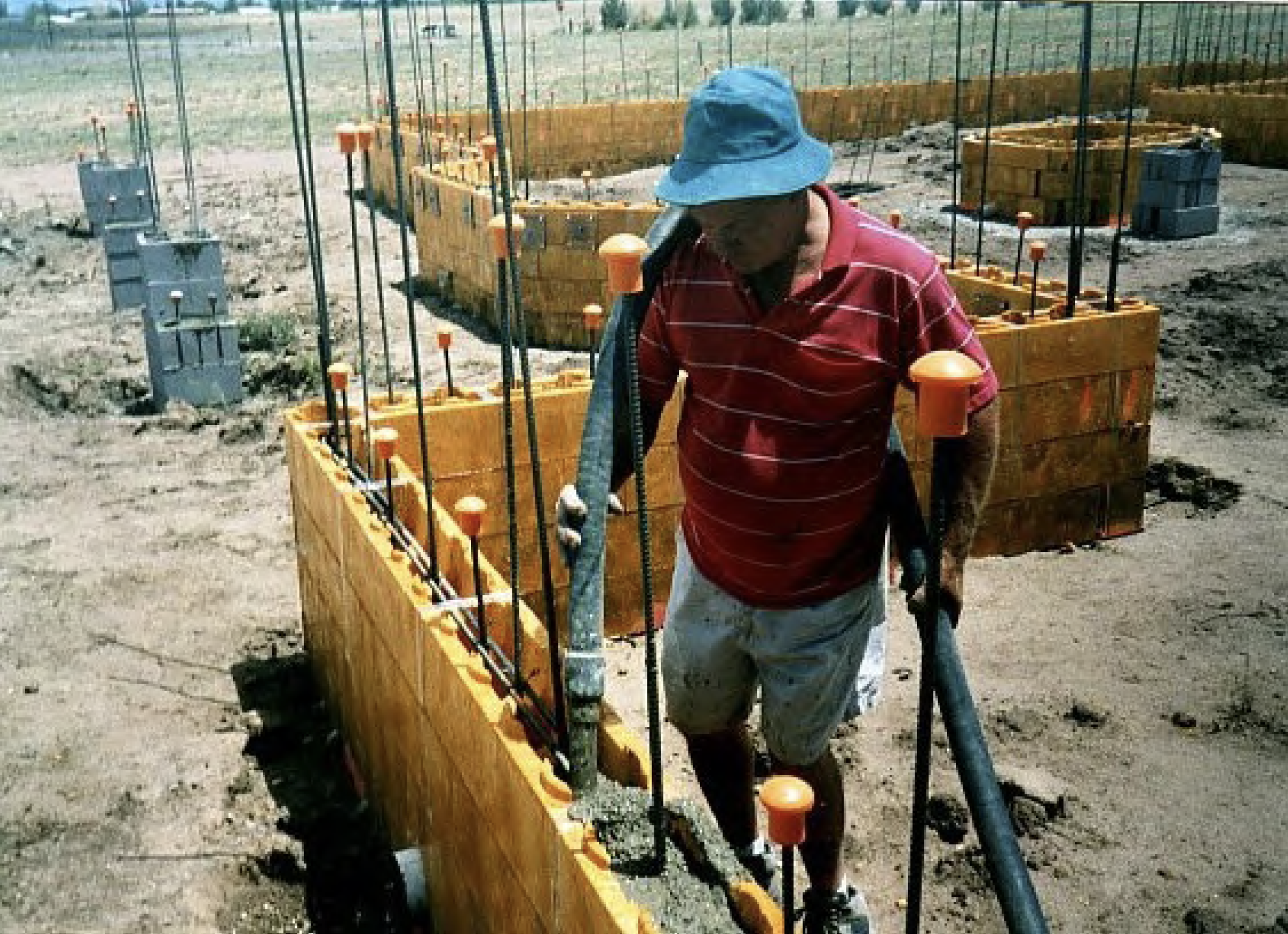
Bond Beam Course
Rebar segments should be tied or clipped to rebar that is embedded into concrete slab or footing, and extended to approximately 2’ above the first bond beam height, as shown on next page. Stacking of walls should continue around the perimeter of the building until the first bond beam is reached. (Check the engineering reports or wall sections to establish its exact height)
ThermoBlock bond beam blocks look like regular stretcher blocks with a trough cut out of the center of the block, as shown. This allows rebar and concrete to pass horizontally, tying vertical cylinders together and forming a horizontal beam above openings and other locations.
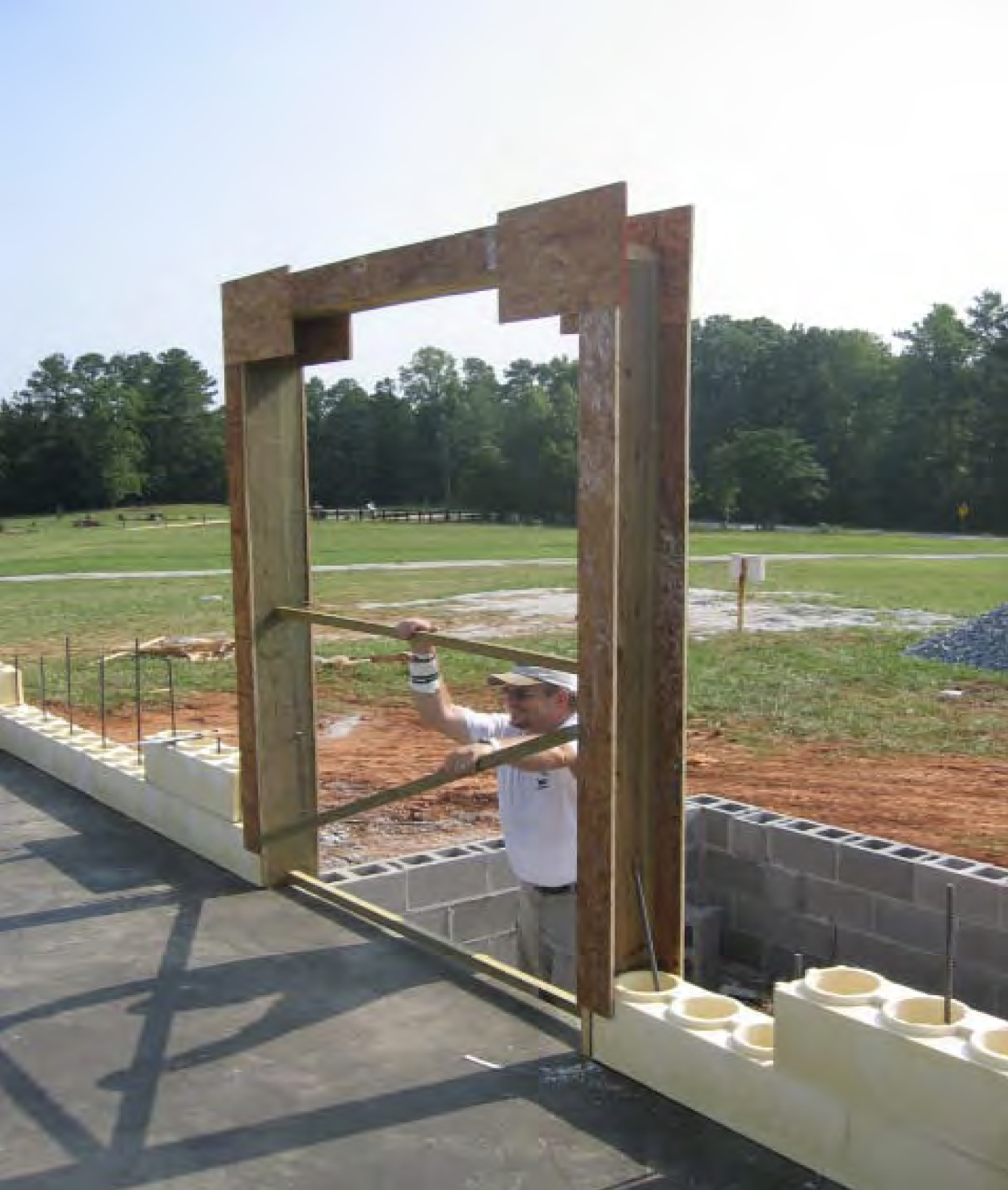
Door and Window Headers
Door and window headers and rough buck systems are installed at various times during the wall installation process depending on their location and height. It is generally preferred to construct all windows and doors bucks ahead of time and mark their locations and sizes clearly on the buck. Often it is beneficial to assign each opening a sequential letter or number to coincide with letters or numbers marked on the slab or wall as described earlier. However, this should be in addition to location information, sizes and sill/ header heights.

What is ThermoBlock®?
- 8 x 8 x 32 Inch Polyurethane Foam Blocks interlock and fit together to create a Super-Insulating Next Generation ICF™
- Vertical seams are glued and sealed to create a strong bond and an impenetrable air barrier
- Significantly faster Installation with less labor compared to CMU and traditional ICF. 3-5 man assembly teams are typical.
- All blocks and steel framing members can be manufactured on site. This significantly reduces shipping and transportation costs, and eliminates long procurement leads times commonly associated with construction materials these days.
ThermoBlock is a “stay in place” concrete form system used in building construction.
The ThermoBlock system uses a combination of interlocking, stackable polyurethane foam blocks, reinforcing steel rebar, concrete, and steel studs inserted in the wall as straighteners and stabilizers to make a concrete form system. Cells in the wall are then grouted with concrete to form a framework consisting of concrete posts tied together by continuous concrete bond beams spaced as needed.
The foam blocks remain in place after the concrete is poured and readily accept a variety of finishes. Closed cell polyurethane foam has been recognized since the 1950’s as the world’s most efficient insulation material.
The ThermoBlock polyurethane foam blocks are produced by a proprietary injection molding process. The blocks are 8”x 8”x 32”, and have 5 ½” cylindrical openings running vertically through the block, spaced at 8” on centers. The blocks interlock both horizontally and vertically to form a contiguous insulation system with no thermal bridges to allow transfer of heat and cold through the wall systems.
ThermoBlock® Polyurethane ICF Video
DID YOU KNOW?
It is important to understand that ThermoBlock is a stay-in-place insulated concrete form. The blocks themselves are not structural members and the IBS stud provides no structural support other than attachment of interior and exterior finishes. The basis for the structural strength of the wall system is steel reinforced concrete construction. This type of construction offers superior strength when compared to conventional wood frame construction and provides a building that is cost competitive initially and pays dividends to the owner with years of reduced energy costs and building maintenance.
